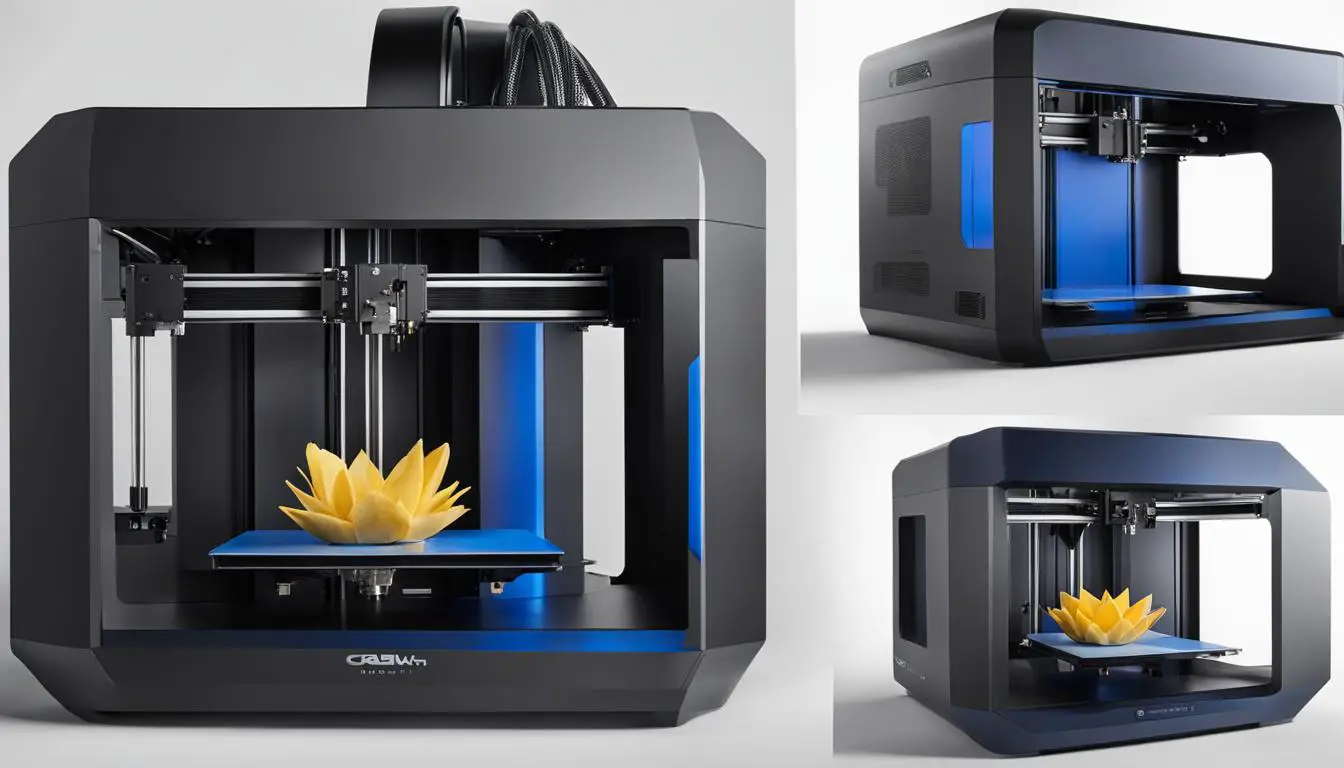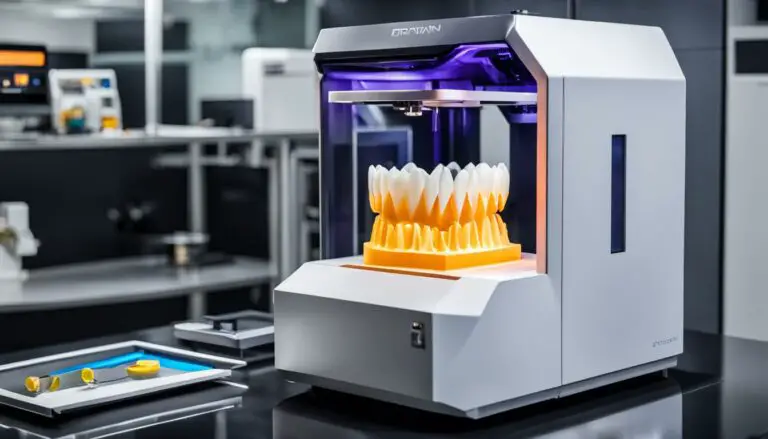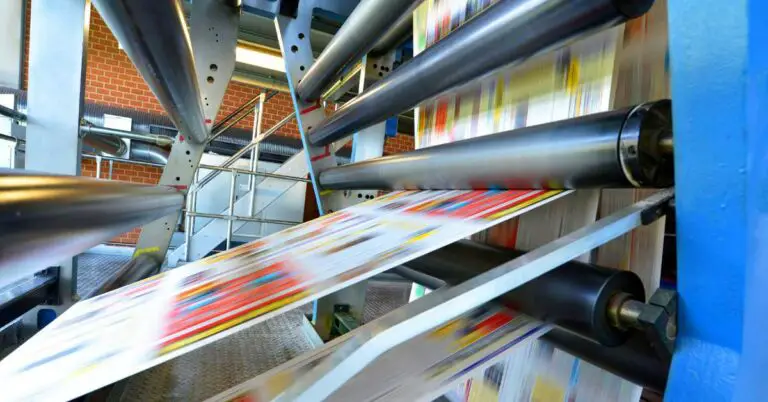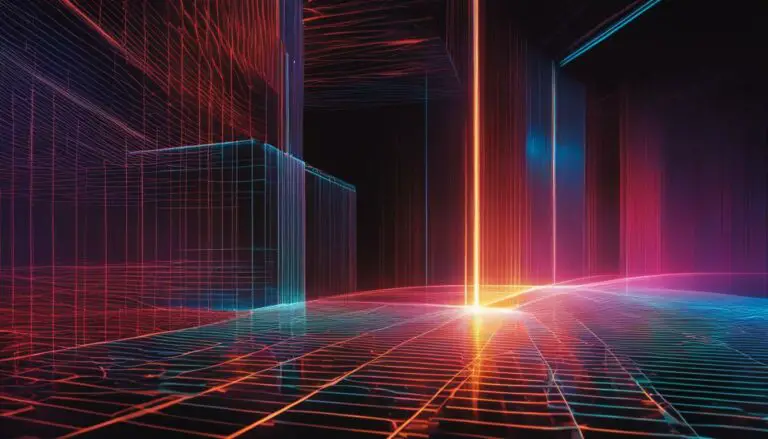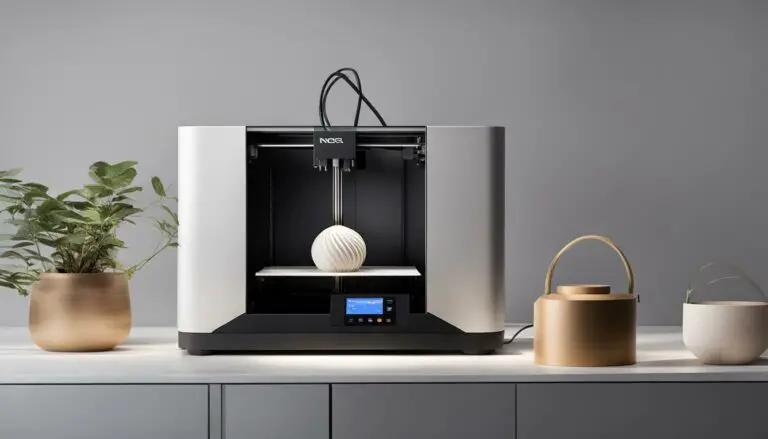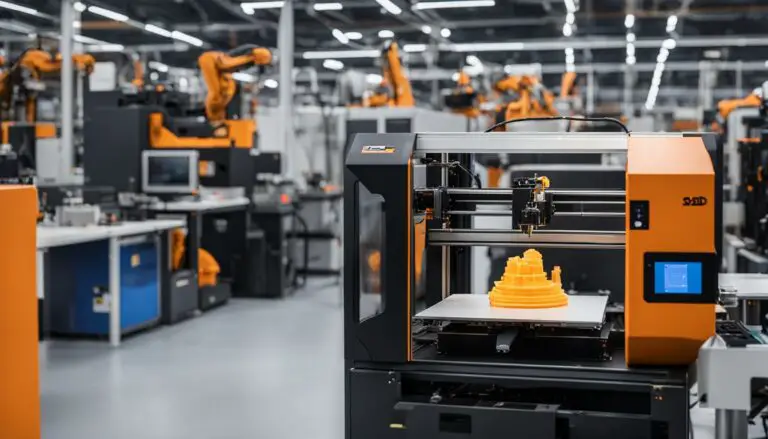Experience High-Performance 3D Printers Carbon Fiber Now!
Originally posted on November 17, 2023 @ 1:32 pm
The introduction of carbon fiber 3D printing technology has significantly transformed the manufacturing sector by providing durable and high-performance solutions for a diverse range of applications. Recent advancements in 3D printing machinery have enabled the creation of robust and lightweight designs using carbon fiber materials. With the strength, toughness, and rigidity offered by carbon fiber 3D printers, they are suitable for producing functional prototypes and final products for demanding projects. Regardless of whether you operate in the medical, aerospace, or automotive industry, investing in a top-quality carbon fiber 3D printer can enhance your printing capabilities and unlock new possibilities for innovation and design.
Key Takeaways:
- Carbon fiber 3D printing technology offers high-performance and durable solutions for various industries.
- Carbon fiber materials enable the creation of lightweight and strong designs.
- Investing in a high-quality carbon fiber 3D printer can open up new possibilities for innovation and design.
- Automotive, aerospace, and medical industries benefit from the strength and toughness of carbon fiber 3D printed parts.
- Carbon fiber 3D printing elevates printing capabilities and improves the quality of end-use parts.
Advantages of Carbon Fiber 3D Printing
Carbon fiber 3D printing offers numerous advantages over traditional manufacturing methods. The use of carbon fiber materials in 3D printing results in lightweight but incredibly strong parts, making it an ideal choice for industries that require high-performance components. The process of carbon fiber reinforced 3D printing involves blending carbon fiber with base materials such as PLA, ABS, or nylon, enhancing their mechanical properties and expanding the range of applications for 3D printed parts. This technology enables the creation of durable, robust, and wear-resistant parts that can withstand extreme conditions. With continuous advancements in carbon fiber 3D printing technology, the possibilities for innovation and design are limitless.
One of the significant advantages of carbon fiber 3D printing is the exceptional strength-to-weight ratio it provides. Carbon fiber materials are renowned for their high tensile strength, allowing 3D printed parts to withstand heavy loads and stresses without sacrificing weight. This makes carbon fiber 3D printing particularly valuable in industries such as aerospace, automotive, and sports equipment, where lightweight but strong components are essential for optimal performance.
Additionally, carbon fiber reinforced 3D printed parts offer excellent thermal and chemical resistance. They can withstand high temperatures and harsh environments without deformation or degradation, making them suitable for applications that require resistance to heat, chemicals, and wear. Whether it’s manufacturing prototypes, jigs, fixtures, or end-use parts, carbon fiber 3D printing technology provides the durability and reliability needed for demanding applications.
| Advantages of Carbon Fiber 3D Printing |
|---|
| Exceptional strength-to-weight ratio |
| High thermal and chemical resistance |
| Enhanced mechanical properties |
| Wide range of applications |
In addition to its mechanical properties, carbon fiber 3D printing also offers design freedom. The ability to create complex geometries, intricate patterns, and custom shapes opens up new possibilities for designers and engineers. With carbon fiber materials, it is possible to produce lightweight parts with optimized structures and reduced material waste. This not only saves costs but also allows for the creation of highly efficient and innovative designs that were previously unattainable with traditional manufacturing methods.
Overall, carbon fiber 3D printing technology provides a groundbreaking solution for industries that demand high-performance, lightweight, and durable components. From aerospace to automotive, sports equipment to medical devices, carbon fiber 3D printing has revolutionized the manufacturing landscape and continues to push the boundaries of what is possible. The advantages of carbon fiber 3D printing, including its exceptional strength-to-weight ratio, thermal and chemical resistance, enhanced mechanical properties, and design freedom, make it a game-changer in the world of additive manufacturing.
Choosing the Right Carbon Fiber 3D Printer
When it comes to selecting a carbon fiber 3D printer, there are several factors to consider to ensure you choose the right one that meets your specific needs. One important aspect is the type of filament the printer supports. A versatile carbon fiber 3D printer should be compatible with a wide range of materials such as PLA, ABS, nylon, and more. This compatibility allows for the creation of functional prototypes and end-use parts in various industries.
Another crucial consideration is the applications for which the carbon fiber 3D printer will be used. Different industries have different requirements, so it’s essential to choose a printer that suits the specific demands of your field. Whether you’re in the automotive, aerospace, or medical industry, selecting a high-performance 3D printer for carbon fiber is crucial to ensure the strength, toughness, and rigidity needed for demanding projects.
Additionally, the extrusion system of the carbon fiber 3D printer is a vital factor to consider. A robust extrusion system capable of handling composite filaments ensures high dimensional accuracy and consistent printing quality. The build volume of the printer is also an important consideration, as it should be suitable for the size of the parts you intend to produce. By carefully evaluating these factors, you can choose a carbon fiber 3D printer that aligns with your requirements and empowers you to unleash your creativity and innovation.
Table: Comparison of Carbon Fiber 3D Printers
| Carbon Fiber 3D Printer | Compatible Filaments | Build Volume | Extrusion System |
|---|---|---|---|
| QIDI X-CF Pro 3D Printer | PLA, ABS, Carbon Fiber | 300mm x 250mm x 300mm | Dual Extrusion |
| Raise3D E2CF IDEX Independent Dual Extruder 3D Printer | PLA, ABS, Carbon Fiber | 330mm x 240mm x 240mm | Independent Dual Extruder |
| Markforged X7 Gen 2 | Onyx, Nylon, Carbon Fiber | 330mm x 270mm x 200mm | Single Extrusion |
| Ultimaker S5 | PLA, ABS, Nylon, Carbon Fiber | 330mm x 240mm x 300mm | Dual Extrusion |
Table: A comparison of carbon fiber 3D printers, highlighting their compatible filaments, build volumes, and extrusion systems.
Remember that choosing the right carbon fiber 3D printer is essential to unleash the full potential of carbon fiber 3D printing in your projects. By considering factors such as filament compatibility, application requirements, extrusion systems, and build volume, you can make an informed decision and elevate your printing capabilities to new heights.
Top Carbon Fiber 3D Printers on the Market
When it comes to carbon fiber 3D printing, choosing the right printer is essential to achieve high-quality and reliable results. There are several top-notch carbon fiber 3D printers available on the market that have proven their performance and versatility. Here, we will explore the best options that can help you elevate your 3D printing capabilities and unlock new possibilities for innovation and design.
QIDI X-CF Pro 3D Printer
The QIDI X-CF Pro 3D Printer is a highly regarded option for carbon fiber 3D printing. It features a sturdy construction and a large build volume, allowing you to print larger parts with ease. The printer supports a wide range of materials, including carbon fiber, making it suitable for various applications. With its advanced extrusion system and precise printing capabilities, the QIDI X-CF Pro ensures high-quality and reliable prints.
Raise3D E2CF IDEX Independent Dual Extruder 3D Printer
The Raise3D E2CF IDEX Independent Dual Extruder 3D Printer is another top contender in the carbon fiber 3D printer market. It offers the flexibility of independent dual extrusion, allowing you to print complex parts with different materials or colors simultaneously. The printer’s robust extrusion system and precise calibration ensure accurate and reliable prints. With its large build volume and compatibility with various materials, including carbon fiber, the Raise3D E2CF is a reliable choice for demanding projects.
Markforged X7 Gen 2
The Markforged X7 Gen 2 is an industrial-grade carbon fiber 3D printer that delivers exceptional performance and quality. It features advanced composite reinforcement technology, allowing for the seamless integration of carbon fiber into printed parts. With its large build volume and high precision, the Markforged X7 Gen 2 is capable of producing strong, durable, and high-quality carbon fiber parts for a wide range of applications.
Ultimaker S5
The Ultimaker S5 is a professional-grade 3D printer that offers compatibility with carbon fiber materials, making it suitable for high-performance applications. It features a dual extrusion system and a heated chamber, ensuring stable and accurate prints. The Ultimaker S5 also boasts a large build volume and advanced software capabilities, allowing for the creation of complex and functional carbon fiber parts.
When choosing a carbon fiber 3D printer, consider factors such as the printer’s compatibility with carbon fiber filaments, extrusion system capabilities, build volume, and overall reliability. Each of the top carbon fiber 3D printers mentioned above offers unique features and advantages, making them suitable for different printing requirements. Explore these options and find the one that best fits your needs to experience the power of carbon fiber 3D printing.
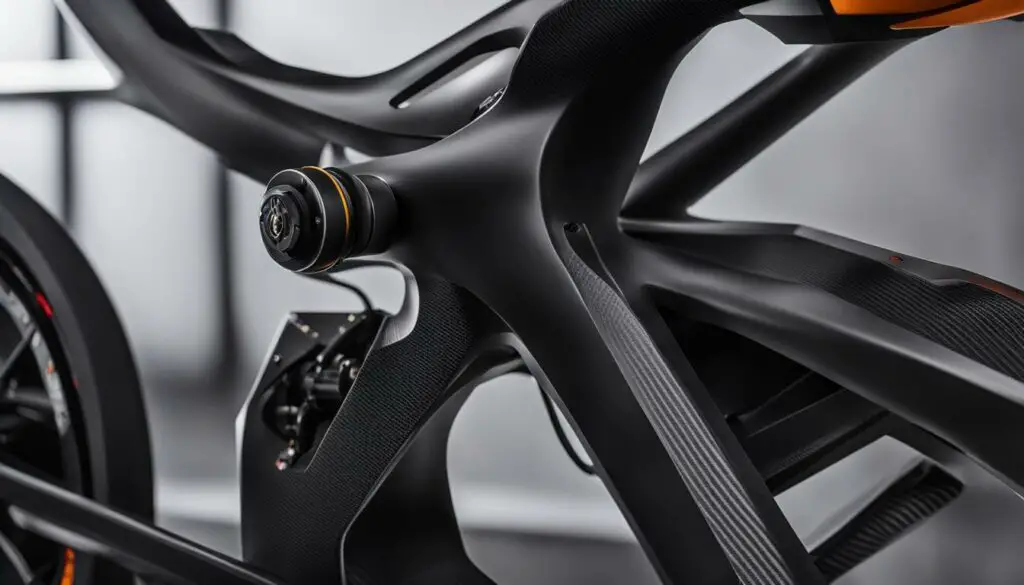
Features to Consider in a Carbon Fiber 3D Printer
When evaluating a carbon fiber 3D printer, there are certain features that you should consider to ensure optimal performance and quality. Look for printers that incorporate carbon fiber additive manufacturing technology, which allows for the seamless integration of carbon fiber into the printed parts. The printer should also support a wide range of carbon fiber 3D printer filament options to accommodate various applications. High-performance 3D printers for carbon fiber should have features such as a heated chamber for improved print stability and a dual extrusion system for increased printing efficiency. Additionally, consider the overall build quality, ease of use, and compatibility with industry-standard software for a seamless workflow.
Carbon Fiber Additive Manufacturing
One of the key features to look for in a carbon fiber 3D printer is the ability to incorporate carbon fiber additive manufacturing technology. This allows for the direct integration of carbon fiber into the printed parts, resulting in enhanced strength, stiffness, and durability. By blending carbon fiber with other materials such as PLA or ABS, the printed parts can benefit from the lightweight properties of carbon fiber while maintaining the desired mechanical performance.
Wide Range of Filament Options
A versatile carbon fiber 3D printer should be compatible with a wide range of filament options to accommodate different applications. Look for printers that can handle various carbon fiber 3D printer filament materials, including different blends, composites, and grades. This flexibility allows for the production of functional prototypes, end-use parts, and custom components with the desired mechanical properties and performance characteristics.
Heated Chamber and Dual Extrusion System
To ensure consistent print quality and reduce the risk of warping or delamination, consider a carbon fiber 3D printer with a heated chamber. A heated chamber provides a controlled environment with uniform temperature distribution, minimizing thermal stress and improving overall print stability. Additionally, a dual extrusion system can greatly enhance printing efficiency by allowing the simultaneous use of carbon fiber and support materials or different colors. This can save time and streamline the printing process, particularly for complex or multi-material designs.
Build Quality, Ease of Use, and Software Compatibility
When selecting a carbon fiber 3D printer, pay attention to the overall build quality, as it can significantly affect print accuracy and reliability. Look for printers constructed from sturdy and durable materials that can withstand the demands of continuous carbon fiber printing. Ease of use is also an important consideration, especially if you are new to 3D printing. Choose a printer with user-friendly features, intuitive interfaces, and accessible controls. Lastly, ensure compatibility with industry-standard software, such as slicing and modeling programs, to ensure a seamless workflow from design to print.
By carefully considering these features, you can choose a carbon fiber 3D printer that meets your specific requirements and empowers you to create high-performance, lightweight, and durable parts for your projects.
The Applications of Carbon Fiber 3D Printing
Carbon fiber 3D printing has emerged as a versatile technology with a wide range of applications across various industries. Whether you’re in automotive, aerospace, medical, or sports equipment manufacturing, carbon fiber parts offer unmatched strength, durability, and lightweight properties.
In the automotive industry, carbon fiber 3D printing is used to produce lightweight and high-strength components like chassis, body panels, and interior parts. By reducing the weight of vehicles, manufacturers can improve fuel efficiency, enhance performance, and reduce emissions. Carbon fiber 3D printing also enables the creation of complex geometries and intricate designs that are otherwise challenging with traditional manufacturing methods.
In the aerospace sector, carbon fiber 3D printing plays a crucial role in producing lightweight yet robust parts for aircraft and spacecraft. From structural components to engine parts and interiors, carbon fiber offers excellent strength-to-weight ratio, making it ideal for applications where weight reduction is critical. Furthermore, the ability to print complex geometries ensures efficient use of materials and reduces waste in the manufacturing process.
| Industry | Applications of Carbon Fiber 3D Printing |
|---|---|
| Automotive | Chassis, body panels, interior parts |
| Aerospace | Structural components, engine parts, interiors |
| Medical | Prosthetics, implants, surgical instruments |
| Sports Equipment | Rackets, bike frames, protective gear |
In the medical field, carbon fiber 3D printing offers significant advantages for developing prosthetics, implants, and surgical instruments. The lightweight nature of carbon fiber makes it suitable for creating comfortable and functional prosthetic limbs. It also ensures the durability and strength required for implants and surgical instruments, contributing to improved patient outcomes.
The sports equipment industry also benefits greatly from carbon fiber 3D printing. By utilizing this technology, manufacturers can produce high-performance products such as rackets, bike frames, and protective gear that are lightweight, strong, and optimized for performance. Carbon fiber’s unique properties enhance the performance of athletes, providing them with a competitive edge.
With such diverse applications, carbon fiber 3D printing is poised to revolutionize various industries, offering innovative and efficient manufacturing solutions. By harnessing the power of this technology, companies can achieve enhanced product development, improved performance, and increased competitiveness in their respective markets.

The Future of Carbon Fiber 3D Printing
Carbon fiber 3D printing technology is rapidly evolving, paving the way for exciting advancements in manufacturing. With continuous improvements in carbon fiber additive manufacturing, the future holds immense potential for this revolutionary technology. Researchers and manufacturers are focused on enhancing accessibility, cost-effectiveness, and efficiency, making carbon fiber 3D printing a viable option for a wide range of applications.
The integration of carbon fiber 3D printing with emerging technologies such as artificial intelligence and robotics promises to transform manufacturing processes. These innovations can streamline production, increase efficiency, and bring about new possibilities in design and customization. Imagine a future where complex, lightweight carbon fiber parts can be produced with unparalleled precision and speed, enabling industries to create innovative, high-performance products.
As the technology progresses, we can anticipate the development of even stronger and lighter carbon fiber materials. This will open up new opportunities for industries such as aerospace, automotive, and medical, where weight reduction and durability are crucial. The use of carbon fiber 3D printing in these sectors can lead to improved fuel efficiency, enhanced performance, and the production of customized medical devices that perfectly match patients’ needs.
The future of carbon fiber 3D printing is bright, with its potential to revolutionize manufacturing across various industries. With ongoing research and technological advancements, the possibilities are limitless. As this technology becomes more accessible and refined, businesses and individuals can harness the power of carbon fiber 3D printing to drive innovation, improve efficiency, and create cutting-edge products. Stay ahead of the curve and embrace the future of manufacturing with carbon fiber 3D printing.
Experience the Power of Carbon Fiber 3D Printing
Carbon fiber 3D printing is revolutionizing the manufacturing industry, providing you with high-performance and lightweight solutions for a wide range of applications. By investing in a top-of-the-line carbon fiber 3D printer, you can elevate your printing capabilities and unlock new possibilities for innovation and design.
Whether you are a professional engineer, a designer, or a hobbyist, the power of carbon fiber 3D printing is within your reach. With the advancements in technology and materials, there has never been a better time to explore the world of carbon fiber 3D printing and embrace the future of manufacturing.
Imagine the ability to create durable, robust, and lightweight parts that can withstand the most demanding conditions. With high-performance 3D printers for carbon fiber, you can turn your ideas into reality and bring your designs to life. From automotive and aerospace to medical and sports equipment, the applications for carbon fiber 3D printing are vast and diverse.
So, don’t miss out on the incredible opportunities that carbon fiber 3D printing has to offer. Experience the power of this game-changing technology and stay at the forefront of innovation. Invest in a carbon fiber 3D printer and unleash your creativity like never before.
FAQ
What are the advantages of carbon fiber 3D printing?
Carbon fiber 3D printing offers lightweight and incredibly strong parts, making it ideal for high-performance applications.
What materials can be used in carbon fiber 3D printing?
Carbon fiber can be blended with materials like PLA, ABS, and nylon to enhance their mechanical properties and expand the range of applications.
How do I choose the right carbon fiber 3D printer?
Consider factors such as filament compatibility, extrusion system capabilities, and build volume to find a printer that meets your specific needs.
What are some top carbon fiber 3D printers on the market?
The QIDI X-CF Pro, Raise3D E2CF IDEX, Markforged X7 Gen 2, and Ultimaker S5 are all highly regarded for their performance in printing carbon fiber parts.
What features should I look for in a carbon fiber 3D printer?
Look for printers that incorporate carbon fiber additive manufacturing technology, support various filament options, have a heated chamber, and offer a dual extrusion system for increased efficiency.
What are the applications of carbon fiber 3D printing?
Carbon fiber 3D printing is used in industries such as automotive, aerospace, medical, and sports equipment for functional prototypes, custom components, tooling, and end-use parts.
What does the future hold for carbon fiber 3D printing?
Continuous advancements in technology and materials are expected, leading to even stronger and lighter parts. Integration with emerging technologies like AI and robotics could revolutionize manufacturing processes.
How can I experience the power of carbon fiber 3D printing?
Invest in a high-quality carbon fiber 3D printer to unlock new possibilities for innovation and design in engineering, design, or hobbies.

